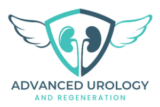
Regenerative Medicine in Urology
Understanding Regenerative Medicine in Urology Regenerative medicine is an emerging field that focuses on harnessing the body’s own healing abilities to restore damaged tissues and organs. In urology, regenerative medicine offers a promising approach to address various conditions affecting the urinary system. Let’s explore the key components and approaches of regenerative medicine in urology.
1.1 Stem Cell Therapy: Stem cells are unique cells with the remarkable ability to transform into different types of specialized cells in the body. In urology, stem cell therapy involves the use of these cells to regenerate and repair damaged tissues in the urinary system. This therapy holds potential for conditions such as erectile dysfunction, stress urinary incontinence, and urinary tract reconstruction.
1.2 Tissue Engineering: Tissue engineering combines cells, biomaterials, and growth factors to create functional tissues or organs in the laboratory for transplantation. In urology, tissue engineering holds promise for reconstructive procedures involving the bladder, urethra, and other urological structures. This approach can provide long-lasting solutions for conditions like bladder cancer, urethral strictures, and congenital abnormalities.
1.3 Gene Therapy: Gene therapy aims to introduce therapeutic genes into the body to treat genetic or acquired diseases. In urology, gene therapy can target conditions such as bladder cancer, prostate cancer, and urinary tract infections. It holds potential for precise and targeted treatment, reducing side effects and improving outcomes.
Clinical Applications of Regenerative Medicine in Urology Regenerative medicine offers a range of potential applications in urology care. Let’s explore some of the areas where it is showing promising results.
2.1 Erectile Dysfunction: Stem cell therapy and tissue engineering techniques are being explored as potential treatments for erectile dysfunction. These approaches aim to restore penile tissue structure and function, offering hope for men who have not responded to traditional treatments.
2.2 Urinary Incontinence: Regenerative medicine techniques, such as stem cell therapy, are being investigated for the treatment of urinary incontinence. By regenerating and strengthening the muscles and tissues that control bladder function, these therapies may provide long-term relief for patients.
2.3 Kidney Regeneration: Research is underway to develop strategies for regenerating damaged kidney tissues, potentially reducing the need for dialysis or kidney transplantation. This field holds promise for treating chronic kidney diseases and improving overall kidney health.
The Future of Regenerative Medicine in Urology Regenerative medicine is an ever-evolving field with immense potential for transforming urology care. Ongoing research and advancements continue to expand the possibilities. Here are some exciting areas of future development:
3.1 Nanotechnology: Nanotechnology involves the use of tiny particles to deliver therapeutic agents to specific areas of the body. In urology, nanotechnology holds promise for targeted drug delivery, tissue repair, and imaging techniques, enhancing the effectiveness of regenerative medicine treatments.
3.2 3D Bioprinting: Advancements in 3D bioprinting allow the precise creation of complex tissues and organs using a layer-by-layer approach. In urology, 3D bioprinting offers potential for custom-made organs, personalized implants, and tissue engineering solutions for conditions such as bladder reconstruction, urethral repair, and even the creation of functional kidneys.
3.3 Immunomodulation: Immunomodulation techniques aim to modulate the immune response to enhance the regenerative process. By regulating the immune system’s reaction to tissue damage or transplantation, researchers are exploring ways to improve the success and durability of regenerative medicine therapies in urology.

